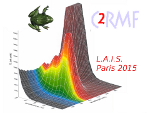Mycenean presence in the area of Delphi is scanty, though there is evidence of prehistoric habitation of Delphi region (province of Phokis) (Liritzis et al, 2015). We have initiated the sub-project of Mycenean Delphi Isotopes Project (MDIP) part of the Delphi4Delphi Program, for a) dating materials related to possible Mycenean habitation, by luminescence and C-14 dating methods, and b) carry out stable isotopes analysis & DNA of human (corroborated by animal bones and local springs) to investigate genetic similarities, diet and origin. The first attempt comes from Desfina village, sitting on a plateau ~680 m asl, across the pleistos river valley. An illicit excavation and robbing of a tomb at Kastrouli in Desfina left back several broken sherds and demolished human bones (Fig.1). Here three ceramic sherds are dated by thermoluminescence (TL) & optical stimulated luminescence (OSL) dating, and the human bone femur by C-14. Strontium, nitrogen and oxygen isotopes are measured for the human bone, as well as, a tooth of a recently died ram nearby the site. XRF composition of sherds was measured, as well as DTA and IR was used for determination of firing temperature of these ceramics. (Xingxiang Zhang et al 2014).
OSL Dates fall within 1500-1200 BC. The cal C14 date was around 13th c BC. Isotopic data indicate that the Mycenean person had a mixed diet. Finally the firing temperature of ceramics examined was less than 800oC.
- Poster

 PDF version
PDF version

